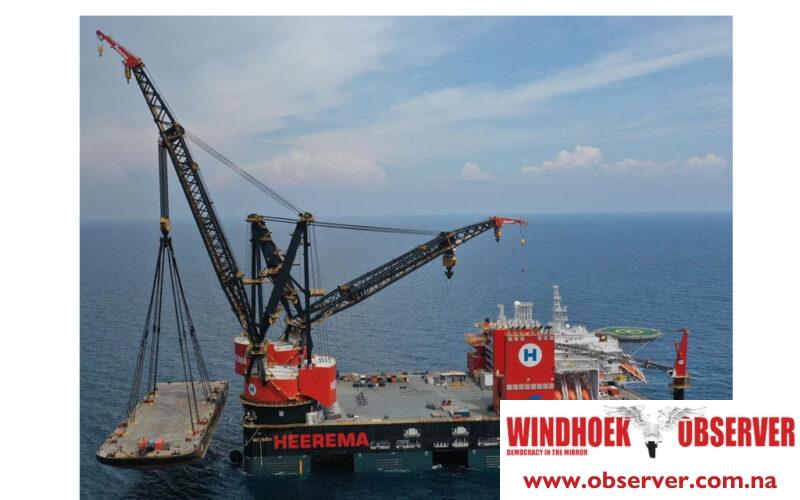Niël Terblanché
The colossal semi-submersible crane vessel (SSCV) Sleipnir, sailing under the flag of Panama, is currently anchored at Walvis Bay.
This maritime marvel, a true testament to the wonders of engineering, is the world’s largest crane vessel.
Sleipnir, a creation of Heerema Marine Contractors, came into existence in 2019, and its name is inspired by Odin’s legendary eight-legged horse from Norse mythology.
What sets this vessel apart is its two massive revolving cranes, constructed by Huisman Equipment B.V., each boasting a jaw-dropping lifting capacity of 10,000 tons. These cranes can seamlessly work together to achieve an extraordinary joint lift of up to 20,000 tons.
Ordered in 2015 and meticulously crafted in Singapore by Sembcorp Marine, Sleipnir officially succeeded Heerema’s previous crane vessel, Thialf, upon its completion in 2019. As the world’s largest crane vessel, Sleipnir redefines the possibilities in offshore operations.
The vessel’s design is equally impressive, featuring a reinforced deck measuring 220 meters by 102 meters, providing ample space for accommodating massive offshore structures and a crew of up to 400 people.
The vessel is powered by eight Wärtsilä azimuth thrusters, it exhibits remarkable manoeuvrability and maintains a cruising speed of approximately 10 knots. However, what truly distinguishes Sleipnir in terms of environmental responsibility is its dual-fuel engines, which can operate on both Marine Gas Oil (MGO) and Liquefied Natural Gas (LNG), significantly reducing emissions.
The vessel boasts an impressive fuel capacity of 8,000 cubic meters of LNG, allowing it to cross the Atlantic or remain operational for an entire month. Ingeniously designed LNG tanks are integrated into their columns, optimizing space utilization while ensuring stability and safety.
Sleipnir doesn’t compromise on onboard amenities and safety features. It includes a helipad, extensive cargo deck space, and advanced life-saving equipment, such as nine Harding FF1200 freefall lifeboat systems.
The vessel’s dynamic positioning system ensures remarkable precision in maintaining its position, a crucial factor during intricate lifting operations.
Since its inception, Sleipnir has consistently shattered records and pushed the boundaries of what’s achievable in offshore lifting and installation. It serves as a testament to the remarkable advancements in marine technology and sets a new benchmark for sustainable offshore operations.
The vessel’s innovative design is a departure from the conventional semi-submersible crane vessels. It features a platform supported by eight symmetrical columns, four on each side, along with streamlined pontoons.
This groundbreaking design minimizes pitching in rough seas, enhancing the vessel’s overall stability. Impressively, the ship’s ballast tanks and LNG storage are ingeniously integrated within these towering columns, each standing at a remarkable height of 23.75 meters.
The cranes aboard Sleipnir, supplied by Huisman, are mounted on tubs with an overall boom length of 144 meters. The slewing system that allows the cranes to rotate boasts the world’s largest bearings, measuring a staggering 30 meters in diameter. To ensure the vessel’s structural integrity, the crane house is securely anchored to the foundation using a complex arrangement of 1100 bolts, each exceeding 82mm in diameter.




